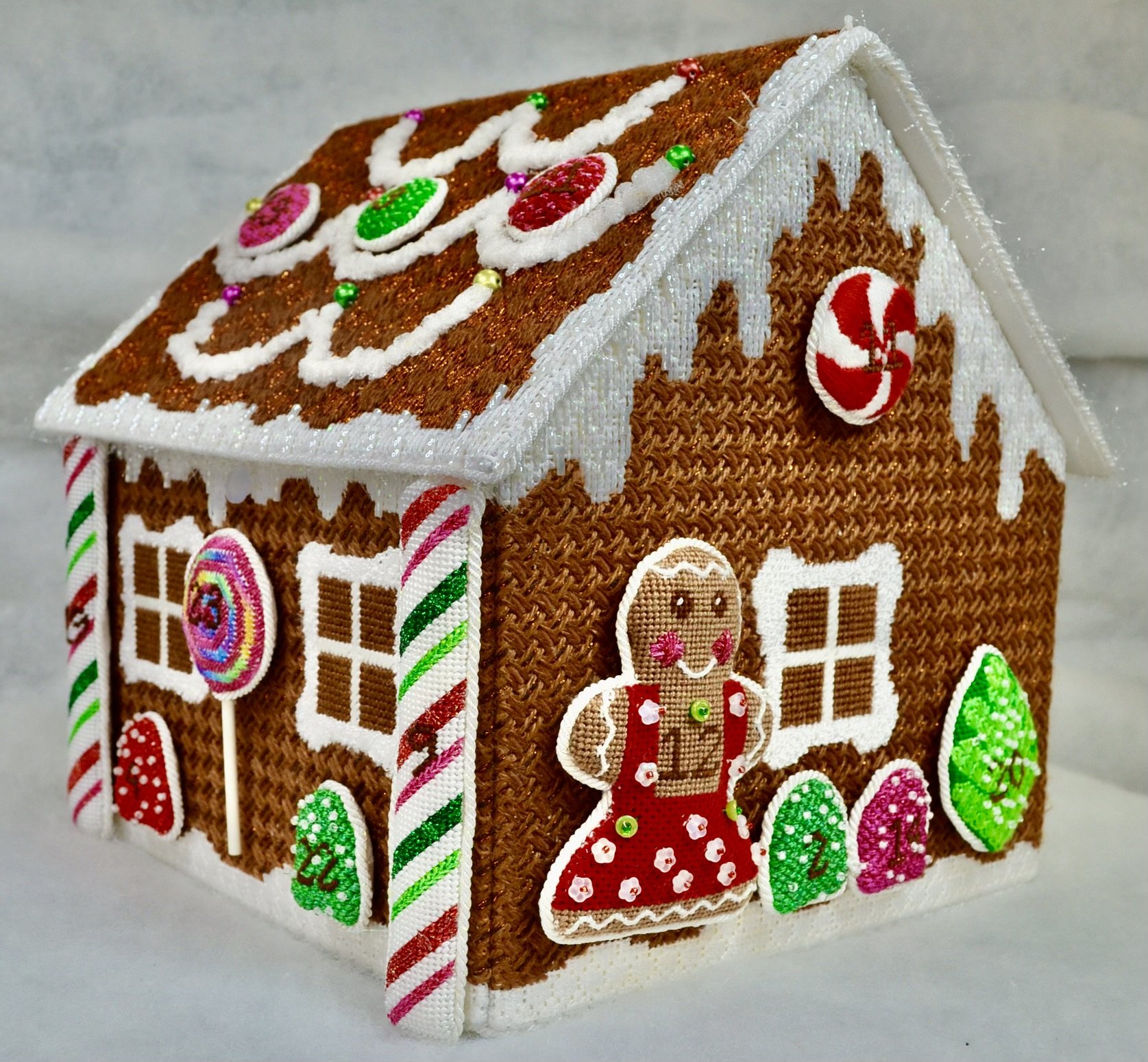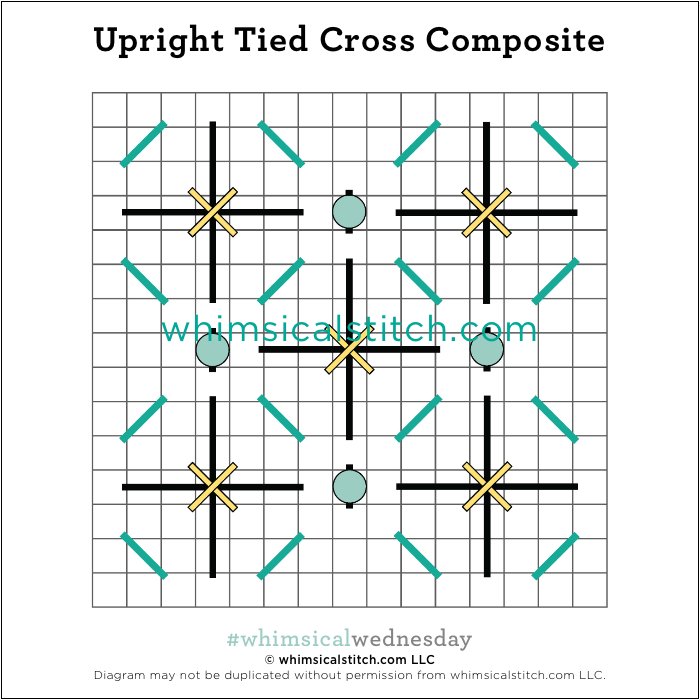It is time that mosaics are the star of a post. As the first stitch in last week’s post demonstrated, mosaics are simple 2X2 squares that can be arranged in so many ways. I use them a lot as accents in larger stitches, but they are just as cute on their own. Today’s post includes several examples.
The first is simple columns of alternating mosaics. The stitched sample is a darling gnome from a recent class, with Vineyard Silk (black lines) and size 8 Kreinik (yellow lines) on 18M. The metallic thread helps this otherwise simple stitch stand out a little and makes Santa’s cost a little more jolly.
Today’s stitch will work well for a front door with silk floss (black lines) and Petite Silk Lame (yellow lines). Consider flipping the diagram 90° for an exterior wall on a cabin. I recommend Rainbow Linen or Straw Silk for that use.
I found the two diagrams below in my stitch library. They are great inspirations for other patterns you can create with nothing but mosaics. (Thank you to Carole Lake for a lot of the mosaic inspiration.)
Mosaics are great stitches, as part of a larger pattern or on their own. I see more posts on this stitch in the future.
As you are auditioning stitches (from any stitch source), count the number of canvas threads on the diagram that match your mesh size. And there you have what an inch of the stitch will look like. Evaluate that against the area where you plan to use the stitch and make your final decision. If you start integrating this step into your stitch selection process, you may be surprised at how many stitches you think are large are much smaller than you realize. (Or, in today’s case, the stitch is much larger than it looks.)
By (sometimes) including this step in my own process, I find I am now integrating much longer stitches than I ever thought I would. I used to think a stitch six rows long was super big. I have very much changed my tune, which has helped me expand my creativity, especially for large-space stitches.
Today’s stitch diagram, along with all other #whimsicalwednesday and #smallspacesunday stitch diagrams, can also be found on a Pinterest board here. Be sure to follow whimsicalstitch.com on Facebook, Pinterest, Instagram, and Twitter.
If you like what you see on this blog, there's more. Mary’s Whimsical Stitches is a series of three books offering contemporary how-to collections of more than 250 stitches (in each volume) for all stitchers, regardless of skill level. All books include updated and sequenced diagrams from this blog plus a collection of all-new stitches from private lessons and other class projects. Visit here to find a needlepoint retailer that carries my books.
New to needlepoint or looking for a refresher? Please download a handy how-to guide covering basic needlepoint stitches and stitch compensation techniques along with new top-line information on needlepoint materials and tools, how to handle threads, and other helpful needlepoint resources.
whimsicalstitch.com also sells Stitch Guides and Stitch Concepts for Melissa Shirley Designs, Zecca Designs, Sandra Gilmore, Purple Palm, Maggie, and Penny MacLeod, and many more. Click here to see the newest guides and click here to see the entire collection.
I hope you have the perfect spot for this stitch! Please enjoy! Have a wonderful #whimsicalwednesday!
A Note about Diagrams
I use color in diagrams to make them as clear as possible. The primary function of different colored lines is to illustrate a stitch sequence. For example, the layering of colors demonstrates you add them in that order. They can also provide ideas on integrating additional threads (one line for each color). Or, you can use the same thread for all color lines. That's where I encourage you to use your imagination for the space you are stitching!































